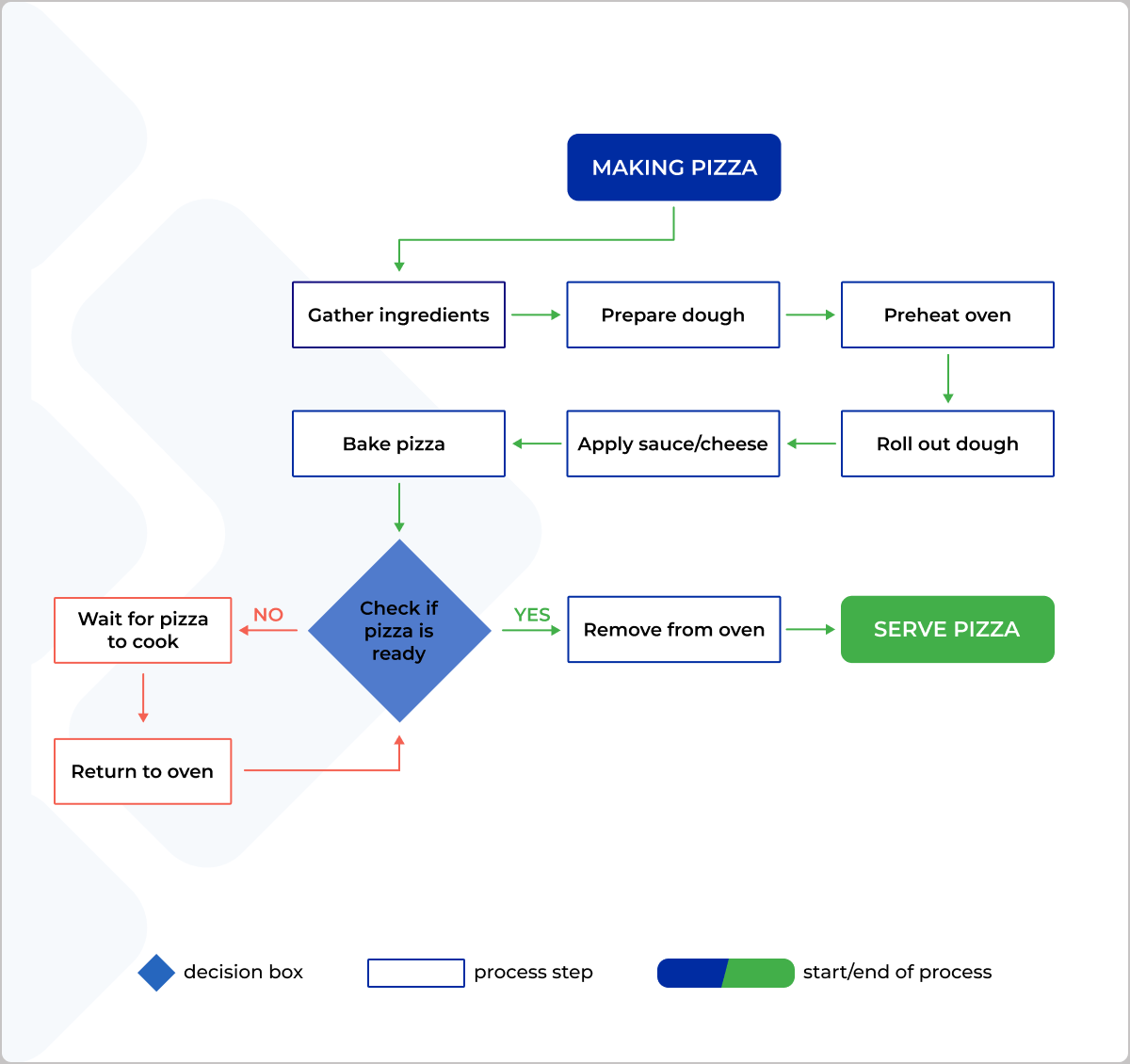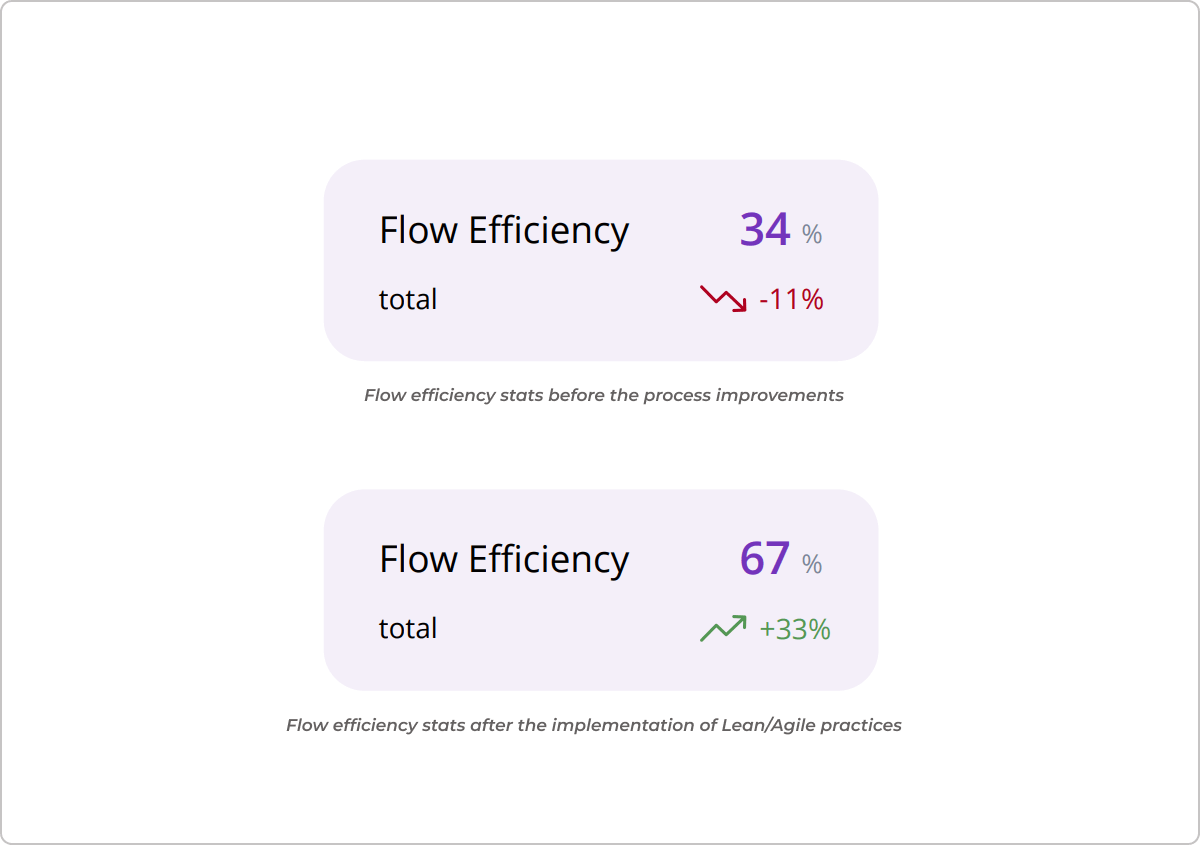It's not a secret that agility is a key trait for forward-thinking organizations. Riding on its wave, data shows a year-over-year rise in the average business agility maturity of companies*.
So, it seems like business agility is here for the long haul.
But how do organizations get there in practice? One pivotal aspect that can make a huge difference, regardless of the environment, is understanding “how we do what we do”. Consequently, process mapping emerges as an invaluable tool for companies looking to become more efficient.
This article delves into what process mapping is, how it benefits teams and organizations, why it's important, and how people apply it successfully.
What Is Process Mapping?
Process mapping is a structured approach for visualizing how a process unfolds along with all the activities involved in it. It helps to achieve greater transparency and visibility into processes, streamline workflows, and improve efficiency. Process mapping is a critical tool in business process management (BPM) and various methodologies like Lean, and Six Sigma, helping organizations optimize their work for better performance.
Business process mapping includes activities such as:
- documenting business processes
- defining responsibilities and ownership
- clarifying what represents business success
Process maps make use of universal symbols to illustrate the inputs, outputs and steps in a process. Such symbols include a terminator, a document, a process step, a connector, a decision, and a flowline. Some of the symbols are illustrated in the following representation.
 Process mapping example
Process mapping example
Types of Process Maps
A process map can provide high-level overviews as well as detailed analyses based on your specific goals and requirements. Here are five of the most widely used process mapping techniques.
- Flowcharts: Basic and universal diagrams showing the step-by-step sequence of a process using standard shapes like rectangles, diamonds, and arrows.
- Value Stream Maps: Used primarily in Lean management, a VSM illustrates the flow of goods and information as a product or service moves through the value stream.
- Fishbone Diagrams: Visually represent the different factors that caused a problem using various graphic design symbols and tools. The tool helps to both identify the causes of a problem and propose actions.
- SIPOC (Supplier, Input, Process, Output, Customer) Maps: Offers a high-level view of a process, identifying the suppliers, inputs, process steps, outputs, and customers involved.
- Swimlane Maps: Organize activities into lanes representing different departments or individuals, clarifying who is responsible for each step in a process.
Levels of Process Mapping
It is important to understand that each level of process mapping provides a different depth of understanding based on the specific needs of the process analysis.
- High-Level Process Map (Level 1): Provides a bird's-eye view of a process, highlighting the major steps or phases without going into detailed activities or decision points.
- Detailed Process Map (Level 2): Offers a more detailed view, including specific tasks and decision points within each major step of the process.
- Work Instruction Level (Level 3): Breaks down each task in the detailed process map even further, providing step-by-step instructions on how to perform individual activities.
- Document-Level Process Map (Level 4): Focuses on the documents used and created at each step of the process, showing how information flows through the process.
Why Is Process Mapping Important?
The true value of process mapping is to identify areas of improvement with the help of clear visualization, documentation, and analysis of how processes work. Good process maps provide instant information about dependencies, collaborators, and interactions in an end-to-end value delivery cycle.
It’s important to note that a simple visualization of what your team is working on or what they have in the queue is a good start, especially for small teams. However, the true value lies in understanding how efficient your team is and what can be improved in the process. This is where a full process map can be helpful to uncover more about the flow of value in your delivery system.
Value stream maps, for instance, are process mapping techniques that can reveal where bottlenecks lie in a delivery process. Visualizing each step in the process allows you to easily identify where value is created and where work remains idle.
With that kind of information, you can analyze how long work takes between phases (cycle time) and how long it stays in the system (lead time). This level of understanding of a process is important to tackle efficiency problems.
 A value stream map of a kanban system
A value stream map of a kanban system
7 Steps to Improve Your Workflow with Process Mapping
Let's go through the key steps to put process mapping into action!
- Select the Process to Improve: Identify and select a specific process that needs improvement. This step involves determining the scope and objectives of the improvement initiative.
- Create a Baseline Process Map: This map serves as the baseline and includes all the steps, decision points, inputs, and outputs of the process as it currently operates.
- Engage all Involved People: Involve the team members, stakeholders, and process participants in creating a baseline process map and providing feedback. Collaborating ensures an in-depth understanding of the process and its challenges.
- Collect Information: Collect detailed and relevant information about each step in the process, including inputs, outputs, decisions, and who is responsible for each step.
- Redesign the Process Map: Develop a new process model to incorporate feedback and improvement ideas. This step involves creating a new process map that reflects the intended changes.
- Analyze the Process Map: Examine the baseline process map to identify inefficiencies, bottlenecks, redundancies, and any other areas that need improvement. This step often involves looking for steps that do not add value or cause delays.
- Implement the Improved Process: Put the redesigned process into action. This implementation may require training for team members, updating documentation, and altering resources or workflows.
How Can Process Mapping Benefit Your Business?
Process mapping offers several immediate and practical benefits. Here are the five most significant advantages of using process maps:
- Improved Process Understanding: Process mapping provides a clear visual representation of the entire process, helping leaders understand every step involved. This comprehensive understanding is crucial for effective management and decision-making.
- Enhanced Communication: A process map is an excellent tool for communicating process details within a team or across departments. It helps ensure everyone is on the same page so they can understand their roles and responsibilities, reducing misunderstandings and increasing efficiency.
- Identification of Inefficiencies and Bottlenecks: By visually laying out the process, leaders can easily identify inefficiencies, bottlenecks, and redundant steps. This insight is critical for streamlining project workflows and improving overall efficiency.
- Facilitates Continuous Improvement: Process maps make it easier to review and update processes regularly. This way, you can quickly identify areas for improvement, adapt to changes, and implement best practices, fostering a culture of continuous improvement.
- Better Resource Allocation and Risk Management: Understanding the intricacies of a process helps allocate resources more effectively and anticipate potential risks or issues. This proactive approach can lead to more efficient use of resources and reduced operational risks.
Now, let's take a look at how two organizations enhanced their performance using the value stream mapping technique!
How an International Purchasing Division Improved Operational Efficiency by 33% Using Value Stream Mapping
Encoparts, a global distribution logistics organization, embarked on a mission to ease the challenges of its intricate international purchasing unit. To do that, they decided to implement best practices of Agile and Lean to streamline the process.
To kick things off, they aimed for a broader perspective on the entire purchasing process. By carefully mapping out the workflow in the purchasing area using value stream mapping, the organization successfully pinpointed and addressed the unit's vulnerabilities.
The Lean technique helped them visualize every step in the process, determine what adds value to it, and uncover non-value-adding activities.
 Mapping a process on a kanban board
Mapping a process on a kanban board
In turn, this led to:
- Establishing a shared understanding of the international purchasing process
- Accurate identification of all dependencies, both internal and external
- Better understanding of the bottlenecks in the process flow
Clearly, value stream mapping, coupled with other Lean/Agile practices, unlocked a chain of improvement events by analyzing the purchasing unit workflow, and the results speak for themselves. The division not only boosted operational efficiency but is also gearing up to expand its "value chain" across other company divisions to enhance the entire customer service lifecycle.
 Flow efficiency results before and after process improvement
Flow efficiency results before and after process improvement
How 20% More Impediments Got Reduced through Project Flow Mapping
To uphold its top-notch service standards, Brazilian telecom company Algar Telecom needed to expand its Agile operations and start a digital transformation journey. The initiative started with merging their "Integration tribe" and another business unit. The goal of the transfer was to create a cross-functional team where work gets done with agility in mind.
The integration team's traditional ways highlighted certain workflow challenges. They addressed these issues by visualizing the end-to-end flow and optimizing the entire value stream to enhance operational agility.
Using a digital solution, Algar Telecom successfully visualized the entire project delivery flow, allowing each team to break down their projects into specific deliverables. This transparency resulted in increased operational agility across different levels within the company.
 Visualizing project flow on digital boards
Visualizing project flow on digital boards
The initiative's success inspired Agile proponents in the company to believe that everything can be consolidated in a single work management hub. This hub wouldn't just cater to project managers, developers, analysts, and commercial teams; it would serve as the exclusive source of information for comprehensive project portfolio management.
Flow Culture and Process Mapping
We have seen that continuous improvement and process mapping have a certain synergy. Process mapping is an impactful tool in implementing Lean principles, providing a structured and visual means to understand, analyze, and improve processes. It facilitates the Lean culture of continuous improvement by offering a clear and detailed picture of process flows, identifying waste areas, and aiding in developing and standardizing more efficient workflows.
*Source: Business Agility Report 2022
Businessmap is the most flexible software, helping your company gain visibility across all projects/portfolios, align on goals, and deliver quality work faster.

Iva Krasteva
Content Strategist | Agile Practitioner | Kanban Certified
Iva is a Kanban-certified Agile expert with hands-on experience in SEO, content creation, and Lean practices. She has published dozens of articles on Lean, Agile, and Kanban practical applications. Iva actively promotes collaborative, flexible work environments and regularly shares process optimization insights through writing.



